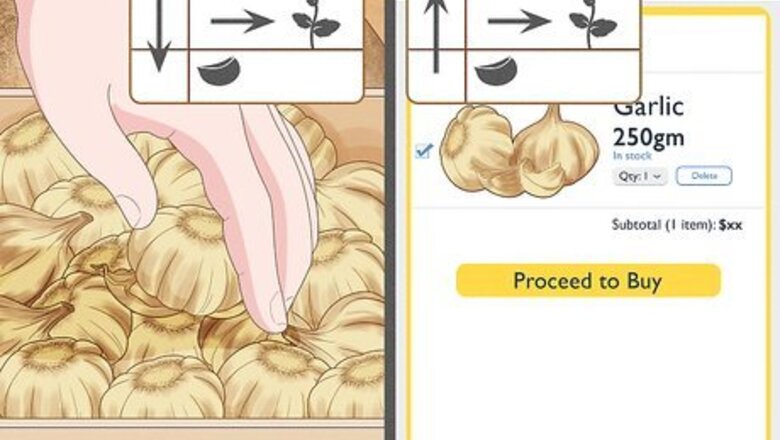
views
Preparing to Plant
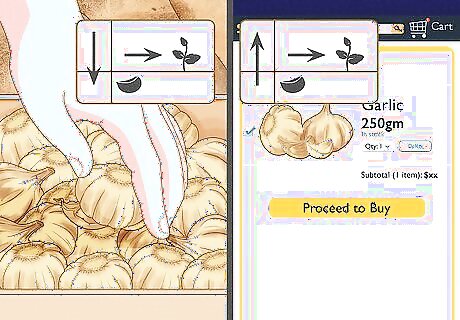
Source garlic to plant. You can always try planting garlic you bought from the grocery store, but you'll have a much higher chance of having a successful crop if you buy garlic cloves, or seeds, from a plant nursery that stocks varieties that grow well in your area. Shop online for a wider selection of garlic and choose one to your liking. Some strains are stronger, some are hardy during cold temperatures, and so on. The garlic stocked in grocery stores is often shipped in from faraway places, so it won't necessary be a strain that works with your climate and soil type. Garlic sold in grocery stores has usually been treated with chemicals to make it last longer on the shelf. It's harder to grow treated garlic than untreated garlic.
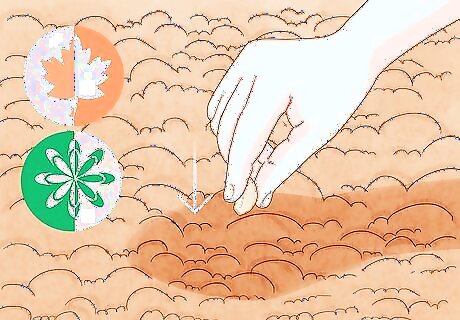
Get ready to plant in the fall or the spring. If you live in a northern area that gets a hard frost, it is recommended that you plant garlic in the fall. Garlic overwinters well, and planting it early will cause the bulbs to be larger and more flavorful than a spring-planted crop. However, if you live in a southern area that doesn't have cold winters, plant your garlic early spring instead. If you're planting garlic in the fall, plan to plant it 6 - 8 weeks before the ground freezes. If you're planting garlic in the spring, plant it as soon as the ground can be worked in February or March.

Prepare a planting site. Choose a spot with full sun and well-draining soil. Work the soil to a depth of 4 inches using a garden rake or hoe. Enrich the soil with compost to add nutrients that will help the garlic grow strong and healthy. If you wish, prepare to grow the garlic in a pot. Choose a pot wide and deep enough to hold the garlic you wish to grow, and fill it with rich potting soil. If you are planting garlic in the ground, place the cloves in the prepared soil with the clove end facing up. Make rows about 2 inches deep, space 6-8 inches between cloves and 12-18 inches between rows.

Plant the garlic cloves. Divide the bulb into individual cloves, keeping the papery skin intact. Plant the cloves 4 inches apart and about 2 inches deep. Make sure that the flat root side is pointing down and the tapered side is pointing up - otherwise the garlic will grow in the wrong direction. Cover the planted garlic cloves with soil and pat gently.
Caring for Garlic
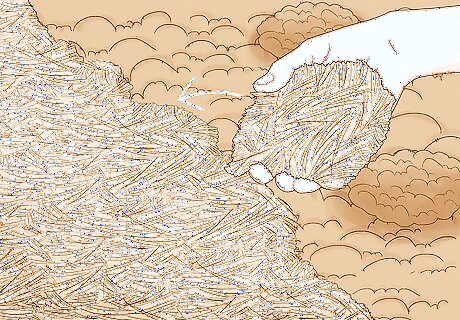
Mulch the area heavily. If you're planting your garlic in the fall, cover the area with 6 inches of straw to protect the garlic during the winter. In the spring, the mulch can be removed. If you're planting your garlic in the spring, be sure to mulch it to retain soil moisture.

Cut off flower shoots in the spring. You should see the garlic scapes emerge from the ground in early spring. Cut off any flower shoots you see, since if they're left to grow they'll take energy away from the bulb formation and result in smaller bulbs.

Keep the garlic watered. Water the garlic every 3 to 5 days throughout the growing season. When you see the soil get dry and dusty, that means it's time to water. Garlic plants don't need to be water during the fall and winter.

Fertilize and weed as necessary. If the garlic shoots look yellowish or limp in the middle of the growing season, you can dress the plants with fertilizer to help them perk up. Keep the garlic bed weeded so that the garlic doesn't have to compete with other plants for nutrients and water.
Harvesting and Curing Garlic

Harvest when the tops turn yellow and begin to die off. At the end of the growing season, in July or August, the tops of the garlic plants will start looking yellow and begin to fall over and die. This means it's time to harvest the garlic. Don't harvest the garlic too late in the season - the bulbs will shrivel and the garlic won't be good to eat. Garlic harvested too early won't cure properly.
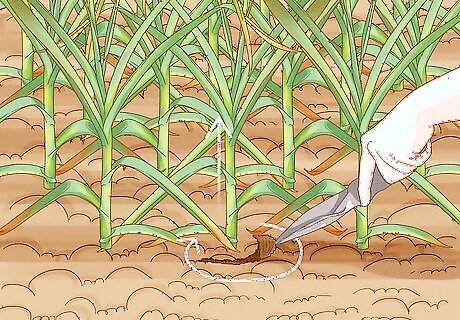
Remove the bulbs from the ground without breaking them. Use a spade to dig around the garlic bulbs without breaking through the cloves. Brush off excess dirt. You can leave the garlic stem attached to the bulb.

Let the bulbs cure for 2 weeks. Before you use the garlic, it's necessary to let it cure. During this time the skin will dry and the bulb will become firm. Store the harvested garlic in a cool, dry place for curing. You can cut off the stem and cure the garlic bulbs individually in a storage bin. Make sure they get plenty of air circulation. Another common way to cure and store garlic is to leave the stems attached and braid them, then hang the garlic in a cool, dry place. You can also cure your garlic by hanging the cloves upside down in a warm, shaded area with the leaves attached.
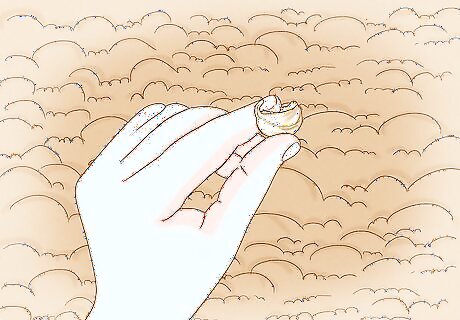
Use the garlic when the skin is dry and papery. The cloves should be firm to the touch, and easy to pull apart.
Save the best bulbs for next season's planting. Pick out a few large bulbs to plant either in the fall before the ground freezes or in early spring. Choose the best-looking bulbs to ensure that next season's plants are big and flavorful.




















Comments
0 comment